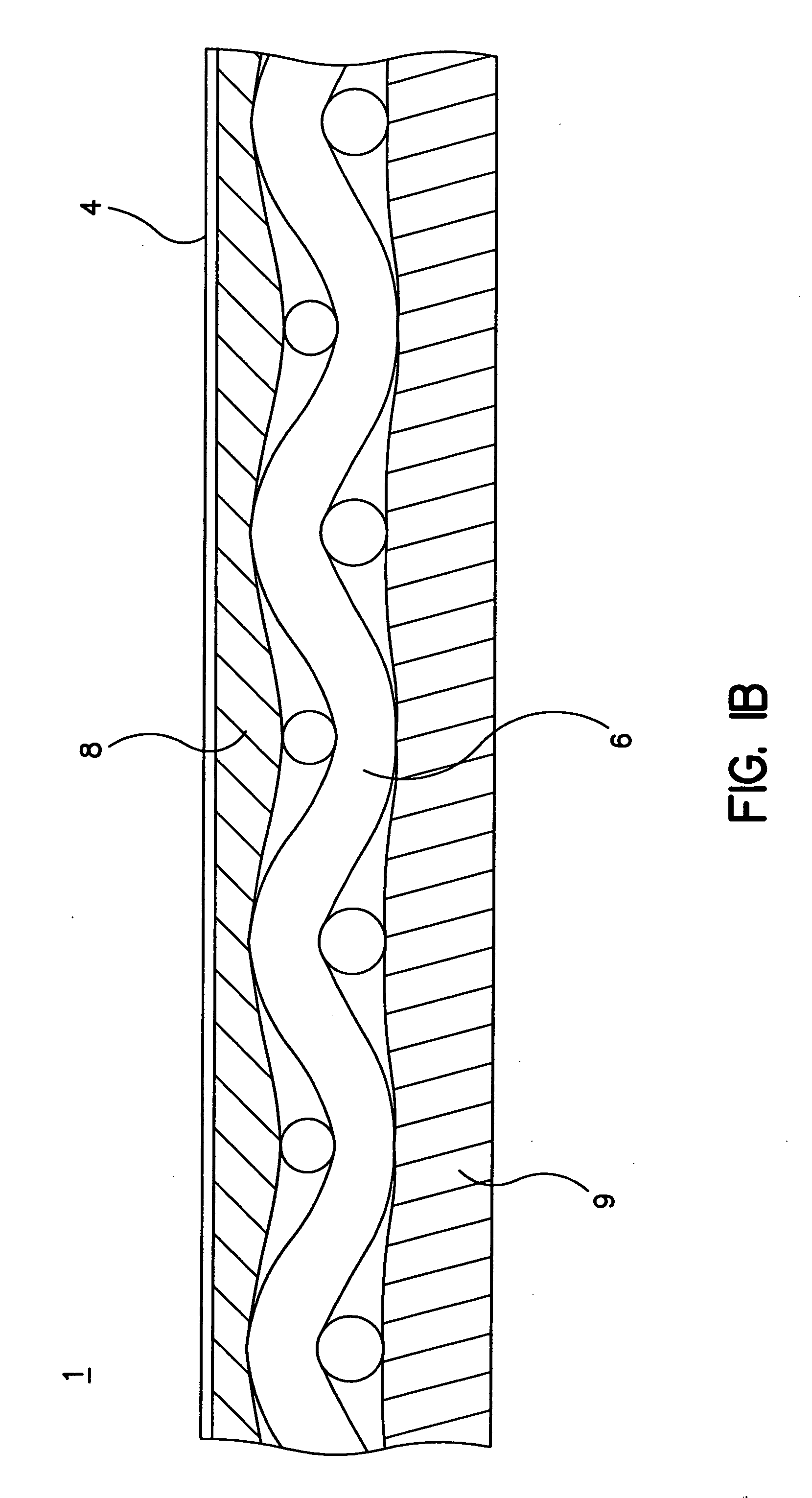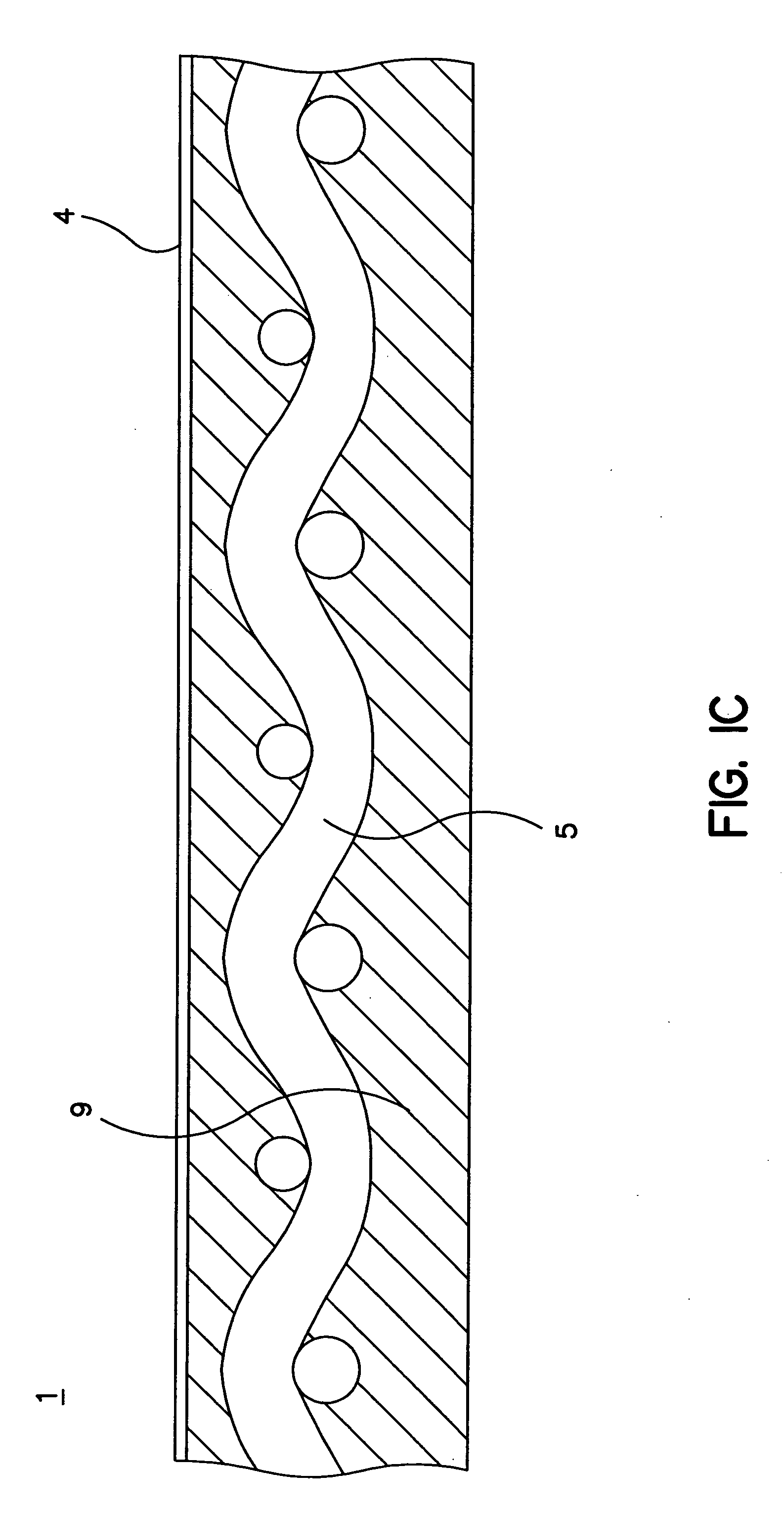Sealing material
a technology of sealing material and sealing thread, which is applied in the field of sealing thread, can solve the problems of major public health problems worldwide, bacteria contamination of food, disease and death, etc., and achieve the effect of preventing the growth and colonization of bacteria and being easy to clean
- Summary
- Abstract
- Description
- Claims
- Application Information
AI Technical Summary
Benefits of technology
Problems solved by technology
Method used
Image
Examples
example 1
[0040] A 4 inch by 4 inch sample of 60×60 wire mesh with 6.5 mil diameter 304 stainless steel wire (MSC Industrial Supply Co.) was laminated on a Carver Press to a composite film of densified expanded PTFE and THV 500 (PTFE layer 10 um thick, density of about 2.3 g / cc / THV layer 10 um thick, W. L. Gore and Associates, Inc. Elkton, Md.) using a 2 mil thick film of THV Grade 220 (Dyneon, Inc.) to laminate the mesh and composite film together. The layers were pressed at 180° C. for 15 minutes under 2.5 tons of force.
[0041] A layer of Dymax 621 UV curable adhesive (available from Dymax, Inc) was applied to a one inch width area of two stainless steel panels. The sealing material was then pressed into the UV adhesive and placed through a UV cure unit (Model No. LC-6B, Fusion UV Systems, Inc).
Example 2
[0042] A sample of 200×200 wire mesh with 1.6 mil diameter 316 stainless steel wire (Newark Wire Cloth Company, Newark, N.J.) was laminated on a roll mill to a composite film of densified ...
example 2
[0046] A layer of butyl adhesive ( 1 / 16″ thick, Q 207-WX-60, Moreau Marketing and Sales, Winston-Salem, N.C.) was laminated to a treated (plasma) film of densified expanded PTFE (PTFE 3 mils thick, density of 2.3 g / cc, W.L. Gore and Associates, Inc Elkton, Md.) using a roll mill at room temperature with a fixed gap of 50 mils at 5 ft / min.
example 3
[0047] A sample of polypropylene mesh (Delnet TK16-35P, 6.5 mil thick polypropylene square net mesh, DelStar Technologies, Inc Middletown, Del.), was laminated on a roll mill between a treated FEP film (2 mil FEP, Dupont, Wilmington, Del.) and a layer of butyl adhesive ( 1 / 32″ thick, BT 132×6W, Moreau Marketing and Sales, Winston-Salem, N.C.) at 60° C. under 80 psig at a rate of 3.3 feet per minute.
PUM
| Property | Measurement | Unit |
|---|---|---|
| surface energy | aaaaa | aaaaa |
| density | aaaaa | aaaaa |
| temperature | aaaaa | aaaaa |
Abstract
Description
Claims
Application Information
 Login to View More
Login to View More - R&D
- Intellectual Property
- Life Sciences
- Materials
- Tech Scout
- Unparalleled Data Quality
- Higher Quality Content
- 60% Fewer Hallucinations
Browse by: Latest US Patents, China's latest patents, Technical Efficacy Thesaurus, Application Domain, Technology Topic, Popular Technical Reports.
© 2025 PatSnap. All rights reserved.Legal|Privacy policy|Modern Slavery Act Transparency Statement|Sitemap|About US| Contact US: help@patsnap.com



